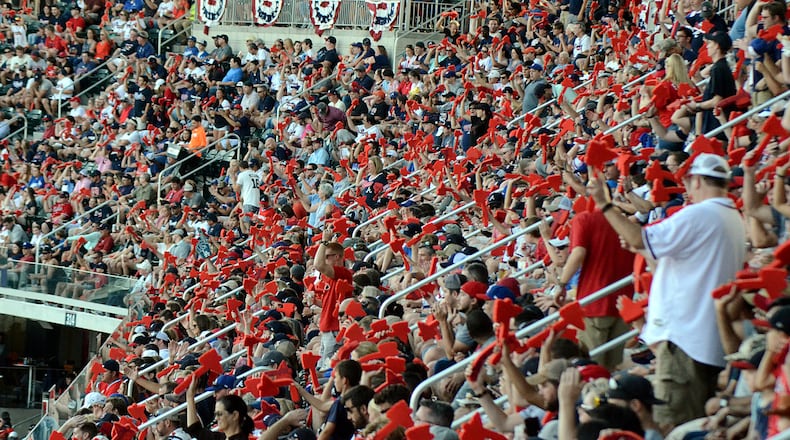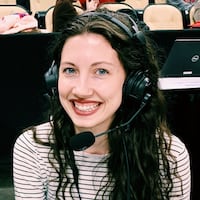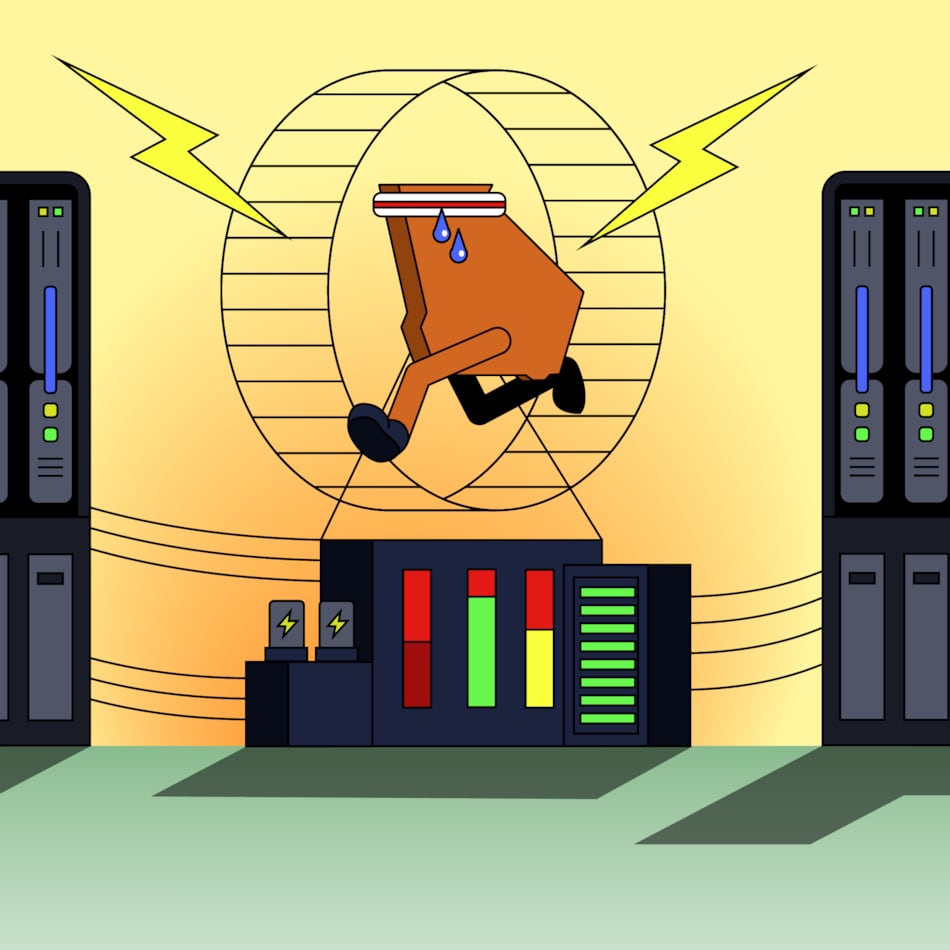Bo Taylor doesn’t remember the exact year he brought a group of kids down from Cherokee, N.C. for a Braves game, but he remembers the exact moment their demeanor shifted.
Taylor, a member of the Eastern Band of Cherokee Indians and a former archivist and director at the Museum of the Cherokee Indian, has always been a Braves fan and grew up watching Dale Murphy. Back in the days of Atlanta-Fulton County Stadium, Taylor and the youngsters were enjoying the game, until another group of fans sat near them and started cheering and making a sound effect by patting hand to mouth.
“About the third inning, these guys showed up,” Taylor said. “They were wearing these fake feathers. They had the war paint on. They were drunk. They started doing the (sound effect). These young kids that were so excited, Indian kids, these were all Indian kids, I should say. All these Indian kids were so excited but when they saw that, and saw how they were portrayed, as more of a caricature, they kind of lost themselves. You could see they were somewhat ashamed of who they were. That’s what I have a problem with.”
For Taylor, if the Braves are going to stay the Braves, it must go hand-in-hand with a long-standing, meaningful relationship with the Native American community, one that fosters an environment of respect and understanding.
The Braves have made some changes to distance themselves from imagery that could be offensive to Native Americans, including removing Chief Noc-A-Homa as mascot. They are now discussing ways to reach out to and honor the Native American community. Friday, Braves chairman Terry McGuirk said that the name Atlanta Braves will stay, but president and CEO Derek Schiller added their position on the tomahawk chop is still unresolved, and conversations on that matter are ongoing.
Within the Native American community, there are strong and varied opinions on the use of the name Braves and associated imagery. Many Native American people, including the National Council of American Indians, have called for the Braves to change both their name and end the use of the chop, asserting the Braves’ name and use of the chop perpetuates the “warrior savage” myth. Some take issue with the chop but not necessarily the name in and of itself. Some are not offended by either.
The use of the chop, in particular, has been controversial since the Braves adopted it in the early 90s, and the issue arose again when St. Louis pitcher Ryan Helsley, a member of Cherokee Nation, spoke out against fans' arm motion and chanting before Game 5 of the National League Division Series in October (for that home game, the Braves didn't distribute foam tomahawks to fans, and took measures to reduce the chop by fans).
Recently, the NFL’s Washington Redskins announced they will undergo a “thorough review of the team’s name” and MLB’s Cleveland Indians, who did away with their “Chief Wahoo” mascot in 2019, announced they will “engage (their) community and appropriate stakeholders to determine the best path forward with regard to their team name.”
The Braves' 60-game 2020 season, shortened by the coronavirus, is set to begin July 24, and the organization faces questions from many, including those in the Native American community, on how it will proceed. After Helsley's comments, the Braves formed a Native American Working Group, and since then, they have been discussing many issues with its members, including whether or not to keep the tomahawk chop.
To Taylor, the name Braves isn't inherently offensive, but the team has a responsibility to use its platform in an educational way. He pointed to the Georgia Swarm lacrosse team, which hosted a Native American Heritage Night in 2018.
“The Atlanta Braves, if they wanted to keep the name, what would be really awesome is if they would embrace people of that culture. ... I think it would be awesome if the Atlanta Braves, if they really wanted to honor Native Americans, make that part of the agenda to educate the people about Native Americans,” Taylor said. “If you’re going to use our name, our likenesses, our whatever, use that to really educate people and make this a platform.”
But the tomahawk chop cheer, Taylor said, is not a historic war cry, and he thinks there must be a better cheer out there for Braves fans to use.
“The nah, nah, nah-nah nah nah, that’s ridiculous,” Taylor said. “That has no meaning to us. ... As for the chop and all this other stuff, I think they could probably do a better job. I’m more mediocre on that. I think they could find a better way to rally the Braves than the tomahawk chop.”
Honor vs. stereotype
The chop as we know it today began at Florida State, which in 2005 received a written resolution from the Seminole Tribe of Florida to use the Seminole name, logos and images, in recognition of FSU's continued collaboration with and relationship to the Tribe.
Florida State describes the war chant as appearing to have "begun with a random occurrence that took place during a 1984 game against Auburn. ... Most agree the chant came from the fraternity section, but many spirited Seminole fans added the hand motion to symbolize the brandishing of a tomahawk." By 1986, it was "a stadium-wide phenomenon."
It spread to the Braves in 1991, when Florida State alum Deion Sanders played in the outfield. The Kansas City Chiefs also adopted the chop. Through spokesman Gary Bitner, the Seminole Tribe of Florida declined to comment for this story.
OTHER VIEWS
» Why talk about this now? » Braves make position clear on name change » Braves fans overwhelmingly support name » Keep the community, change name » Storied history that matters to many » What to tell son, honoring a culture
Many sports teams, including the Braves, who use Native American imagery as a mascot or cheer often say they are invoking the name or practices with the intent to honor that culture. However, to many in the Native American community, the chop is a mockery, as is the use of Native American likeness for a team name or mascot.
In a statement provided to The Atlanta Journal-Constitution, the National Congress of American Indians (NCAI), the “largest and most representative American Indian and Alaska Native organization serving the broad interests of tribal governments and communities,” according to its website, said it “has a longstanding opposition to degrading and misrepresentative stereotypes of Native peoples across mainstream American culture, which includes sports mascots, and related imagery. Since 1968, NCAI has worked to eliminate Native-themed mascots from sports and to educate the general public about the psychological, social, and cultural harms these mascots cause Native peoples, particularly Native youth.”
The NCAI also said that the “warrior savage” myth “reinforces the racist view that Indians are uncivilized and uneducated, and it has been used to justify policies of forced assimilation and destruction of Indian culture. We would count the ‘tomahawk chop’ to be among those symbols. A ritual that is still widely practiced and consumed on television by sports fans across the country, it is a painful perpetuation of the ‘warrior savage’ myth.
Cherokee Nation also supports ending the use of Native American mascots and stereotypes such as the tomahawk chop and wearing war paint, Principal Chief Chuck Hoskin Jr. said in a statement: “The Cherokee Nation supports the removal of Native mascots from team sports. Stereotypical uses of American Indian names and images as representations in major sports teams in the United States is wrong. While some team names may not appear derogatory or offensive as others, the usage and imagery misrepresents the culture of our people. When teams use Native mascots, there is also no way to control the cultural appropriateness on team jerseys, imagery promoted or local fan bases.
“All across the United States, fans embrace stereotypes of American Indians — war bonnets, face paint, crying war chants and making tomahawk-chopping gestures — and mock our culture as though we are vestiges of the past. This does not honor Cherokee traditions, nor do they honor our fellow Native brothers and sisters.
“Instead, they minimize and lampoon legitimate Native traditions. It undermines the understanding of who tribal nations and our people are today. There are 574 federally recognized tribes and each one is culturally unique, modern and progressive. Native mascots were adopted in an age of the country's past when this type of racism was acceptable and cartoonish depictions were allowed, however, today we are in a new enlightened era, and we applaud those sports teams that are taking the appropriate steps to change their names.”
Former Muscogee (Creek) Nation Principal Chief James Floyd spoke out against the tomahawk chop in October, writing in a statement to the AJC that the chop is reductive and “not an appropriate acknowledgement of tribal tradition or culture.”
Credit: ALYSSA POINTER/ALYSSA.POINTER@AJ
Credit: ALYSSA POINTER/ALYSSA.POINTER@AJ
Braves reaching out
A few months ago, Schiller took a trip to Cherokee.
He met with Eastern Band of Cherokee Principal Chief Richard Sneed, watched a presentation by the Tribal Historic Preservation Office on Cherokee history as it relates to the southeast, took a tour around the reservation, toured the Museum of the Cherokee Indian and visited with many Cherokee cultural ambassadors.
Whether or not the organization should continue the tomahawk chop was one of the first items up for discussion — along with, if the Braves were to do away with that, what would they replace it with? Those conversations are ongoing, though the coronavirus has temporarily slowed things down.
Sneed’s impression was that the Braves are genuine in trying to honor the Native American community, and he said he and Schiller have had several phone conversations over the last 6-8 months.
“The organization certainly wants to make sure everything they’re doing is honoring, and is presented in a way that honors Native Americans,” Sneed said.
Speaking on a personal level, and not in his professional capacity, Sneed said he is not offended by the name Braves or the tomahawk chop cheer, but respects the opinion of those who feel differently.
“I always took it as, from the time I was a child or a teen, that it was an acknowledgement of the warrior spirit of Native Americans, and their strength, and so forth,” Sneed said. “To me, the only thing that’s derogatory is Redskins. That’s kind of indefensible. But all the rest of the names, Warriors, Chiefs, Braves, all of that is an acknowledgement of the strength and the courage and the warrior spirit of Native Americans throughout history.”
Sneed pointed out that there are different opinions on this matter in the Native American community. For example, even though Seminole Nation has given their permission for Florida State to use their likeness, there may be citizens who disagree with that measure.
"I think we need to be very mindful as Americans, we need to caution ourselves against collectivism, that we should all think the same about issues," Sneed said. "Certainly there are things I believe our identity as a nation, we collectively abhor certain things, and we should. We have values that define us as a nation. I did an op-ed piece on the murder of George Floyd and my opening statement was, as all other Americans I was horrified when I saw that video. There are things that yes, collectively, we can all agree are horrific and we as a nation need to stand against. I think that in the age that we're in right now, I'm a little bit troubled by the move toward collectivist ideology that everybody should kind of think the same thing."
The Georgia Council on American Indian Concerns consists of a group of nine Georgians appointed by the Governor, and according to its website, by Georgia law "the Council includes five American Indians, one at-large member, one physical anthropologist, one archaeologist, and one other scientist with expertise in American Indian studies."
Chairman Nealie McCormick said in a statement that the Council has an ongoing relationship with the Braves and does not take issue with the team’s name. “The Georgia Council on American Indian Concerns maintains a collaborative relationship with the Atlanta Braves. Historically, this relationship has been built on trust and respect for the Native American community. Presently, our council is committed to continuing our partnership with the Atlanta Braves to highlight and address the real and most pressing concerns facing the Native American Community, such as the preservation of cultural heritage, education and economic opportunity. We support the Braves organization, take no issue with the team's name and are excited to participate in their Native American Working Group. This partnership demonstrates the benefits to all parties of fostering close community relationships between the Braves organization and the Native American community.”
Regarding the use of the tomahawk chop, McCormick added that “the Council has has been focusing on preservation of cultural heritage, education and economic opportunity. No one on the council has expressed a concern over the chop.”
Another member of the Native American Working Group, Ben Keel, who is a member of Chickasaw Nation and public policy consultant focusing on Tribal relations, said the Braves reaching out to the Native American community is a good step, and they have an opportunity to be a positive force in highlighting the Native American population.
“What we’ve been trying to do with the Braves is allow the Braves to be a platform for these stories to be told,” Keel said. “To use the Braves as a tool to educate Georgians on the effects of the Trail of Tears, on the devastating effects that happened to the Cherokees, to the Creeks, to the Choctaws, to the Seminoles, to share those stories and allow them to be honored.”
In Keel’s opinion, the name “Braves” and use of the chop is not offensive, and the Native American community faces bigger issues; what is often more offensive to the community is people misappropriating things like headdress and war paint or making jokes in poor taste about things related to Native American history.
What comes next?
It’s not unheard of for teams to change names or mascots, but it appears the Braves’ name is here to say, as are the tomahawks on their uniforms, based on the organization’s most recent comments. The future of the tomahawk chop is unknown, and could be something the team tries to limit in the future, as it did when Helsley was in the game back in October.
Moving forward, the Braves initiating a bigger relationship with the Native American community and taking the chance to educate people on their history will be an important step, per Keel.
“One thing that we can do, and I say we collectively, not just the Braves, is when you don’t know someone’s history, you really can’t be empathetic to them,” Keel said. “If you don’t realize the things that have happened to Native Americans in society, if you’re not taught those things, you don’t have an appreciation to them.”
To Sneed, there’s no perfect answer on what the Braves should do, but formulating a plan is along the same lines of forming good public policy.
“Whenever we’re evaluating circumstances that are going to require a public policy decision, we do consultations, we gather all of the appropriate data and analytics, we have for lack of a better term, I’ll use a term that the federal government uses with Tribes, listening sessions, where they’re essentially saying ‘Look, we want to hear from you, help us understand,’ ” Sneed said. “It’s about communication and relationship building. And then you develop a policy and you implement that policy knowing full well, No. 1, you’ve tried to do the greatest good for the greater good knowing full well not everybody’s going to be pleased with it. That’s just the reality of how things are. This idea that we’re going to come up with some policy in regard to anything, that everybody’s going to agree on, that’s fantasy. That’s just not going to happen.”
But, as long as the team is the Braves, the tomahawk chop and incidents like the one Taylor described will occur, said Brett Chapman, a Native American rights attorney of Ponca, Kiowa and Pawnee heritage.
“Everything kind of flows from that name,” Chapman said. “So as long as you’ve got this Native American-type mascot, name, or any imagery, that’s going to happen. That chanting’s going to happen, the tomahawk chop’s going to happen. Things change in this world. Teams change names all the time, the Charlotte Hornets, the Charlotte Bobcats, it happens all the time. It’s not going to hurt them to change the name. And when they do, they can start a new tradition.”
Chapman said that there is difference of opinion among the Native American community regarding Native American mascots, but in personal experience, the vast majority are against it.
In 2019, the state of Nebraska gave a statue of Chief Standing Bear to the National Statuary Hall Collection. Chief Standing Bear of the Ponca Tribe won a landmark court case in 1879, which recognized that Native Americans are people under the law and therefore entitled to the same rights as anyone else.
“That’s a real honor,” said Chapman, a descendant of Chief Standing Bear. “These mascots are the complete opposite of that.”
About the Author
Keep Reading
The Latest
Featured





